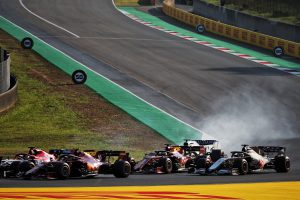Up Next

At Mugello we reverted to old school – a beautiful fast, flowing track where gravel traps punished any excesses, where sweating, adrenaline-filled drivers had to work up to maximising their cars through the fast sweeps.
Perhaps most importantly of all, where a good old-fashioned open-texture of asphalt meant the tyres could breathe despite the severe loads placed upon them by the relentless corners and so it wasn’t a race of tyre management. Much against pre-weekend expectations.
“You’re fighting for position, they’re trying to make it more exciting. They made it over the limit today” :: Lewis Hamilton
This traditional track definitely had some valuable lessons to offer modern Formula 1 that it wouldn’t have found were it not for the pandemic leading to the venue hosting a grand prix.
But the biggest lesson of all was unrelated to the old-school nature of the track. It was to do with how late the safety car lights went out as it came into the pits after circulating for the first six laps of the race.
“They’ve been switching off the lights later and later and later recently,” said the victor Lewis Hamilton afterwards.
“You’re fighting for position, they’re trying to make it more exciting. They made it over the limit today.” This was in reference to a frightening shunt on the pit straight on the restart.
This was said after securing his 90th grand prix victory, just one short of Michael Schumacher’s all-time record, leaving Valtteri Bottas a disappointed runner-up yet again.
The red flag made Hamilton’s victory easier than it might have been, for he’d been beaten off the line by Bottas on the original start.
This put Bottas on pole for the second standing start, after the mess from the safety car restart had been cleared up. Hamilton this time simply passed his team-mate around the outside of the first turn with little apparent resistance from Bottas.
It was the move that won Hamilton the race, ultimately. Just as the first start may have been what was going to win Bottas the race. But there were many twists and turns along the way.
First lap accident – and the loss of Verstappen
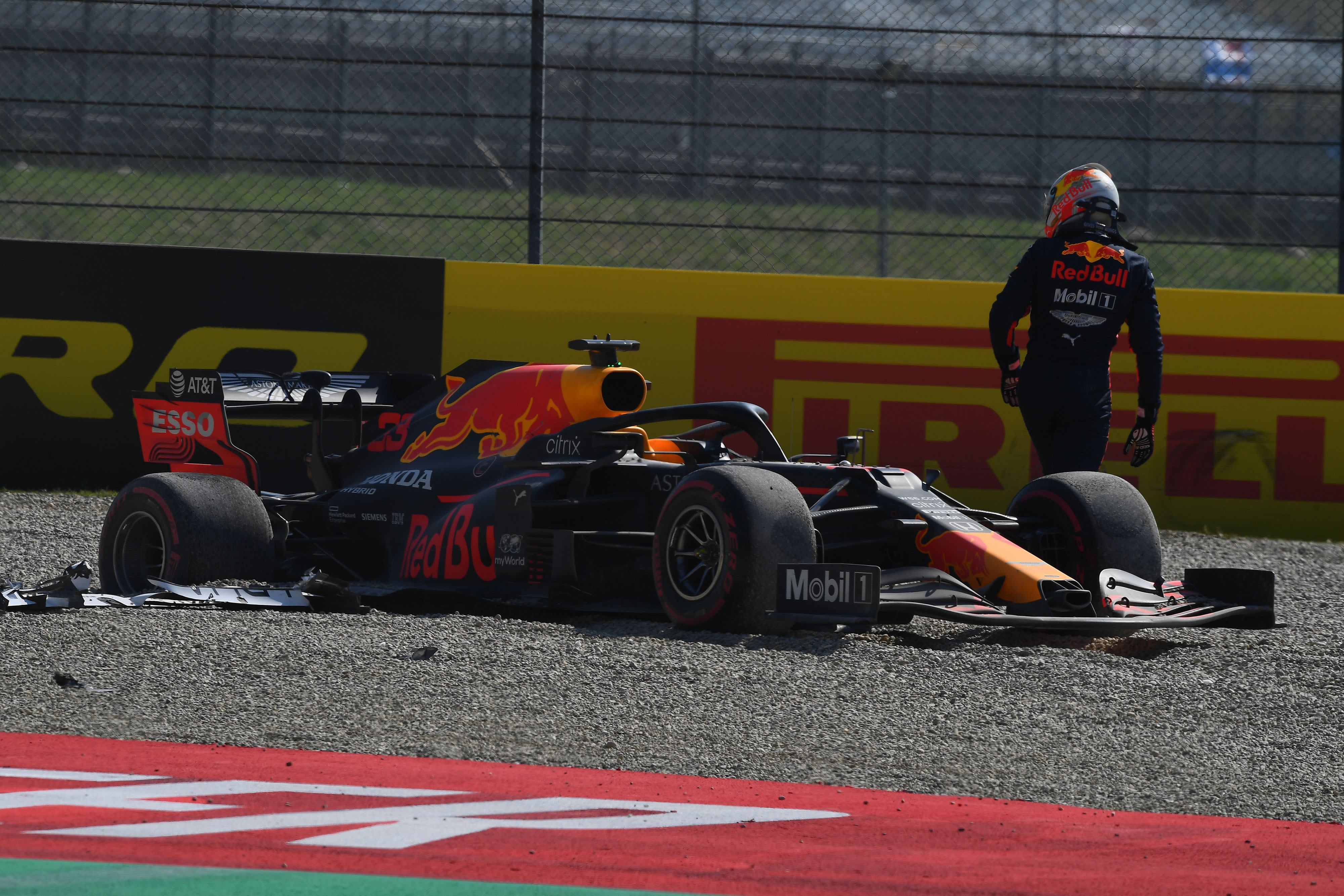
A software issue on the Honda power unit of Max Verstappen’s Red Bull became apparent as he made his misfiring way to the grid. The car was worked on feverishly, just like in Hungary.
Bottas led from the off as Verstappen actually got a great start and was edging ahead of a wheel-spinning Hamilton, looking like he was going to split the Mercedes into San Donato.
But then came a drastic loss of power and the field surged by him – Charles Leclerc, team-mate Alex Albon, the Racing Points, Daniel Ricciardo, the McLarens etc all in a blur.
Verstappen had been closer to the Mercedes on pace than at any time this season
On the uphill exit of that turn Verstappen was the innocent mid-grid victim of a bit of Pierre Gasly impulsiveness as he tried to squeeze the AlphaTauri between the power-sliding Kimi Raikkonen and Romain Grosjean’s Haas.
They didn’t fit and Gasly took Verstappen into the gravel trap with him. Grosjean rejoined with a heavily damaged floor that cost him thick end of 1s per lap for the rest of the afternoon.
Gasly had been keen to make amends for his Q1-exiting qualifying, with some undiagnosed aerodynamic damage that turned the AT01 from the sweet-handling machine it had been throughout practice into an understeering handful. Quite a comedown for the Monza victor.
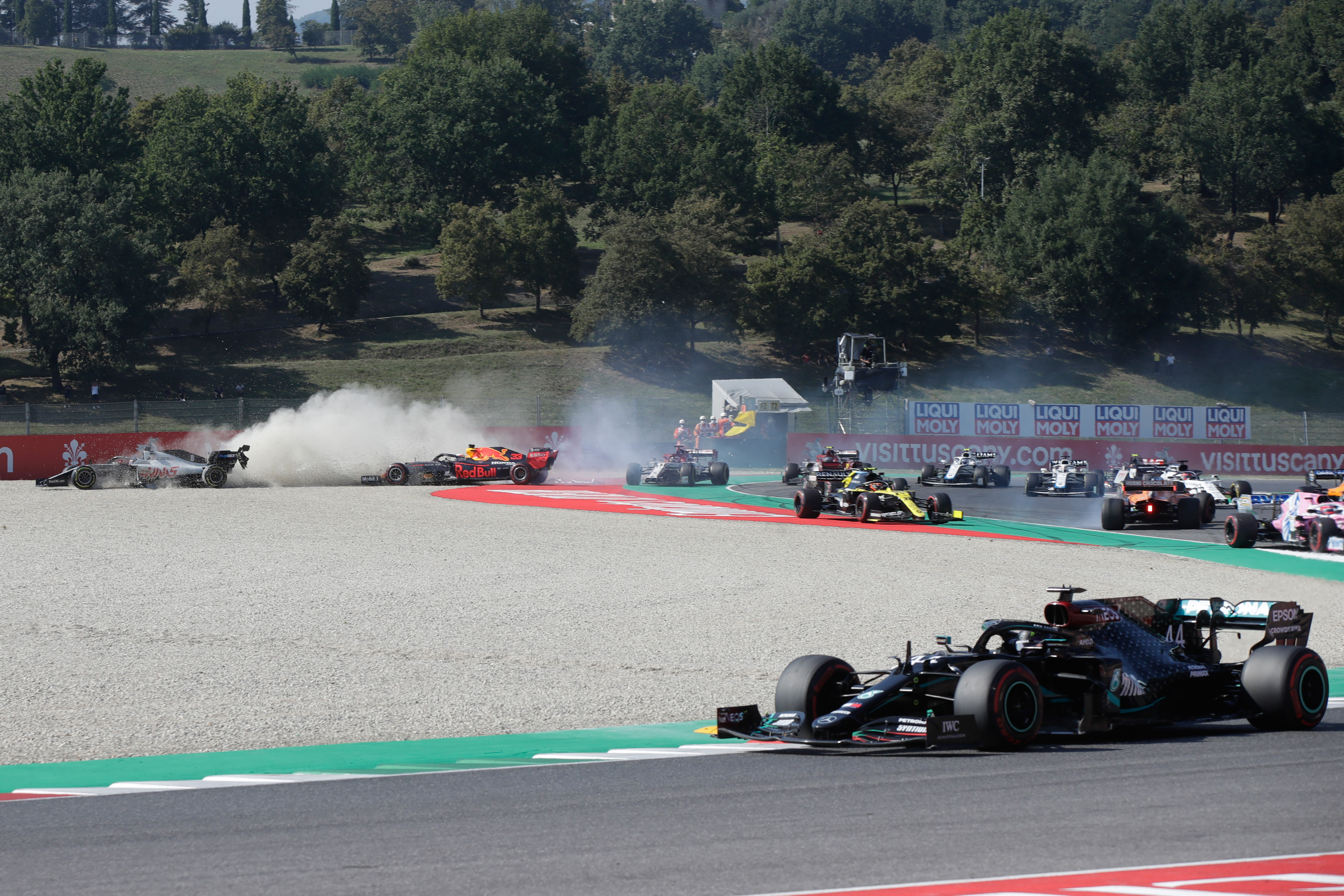
There was a separate incident a few metres further on as Carlos Sainz Jr’s McLaren was spun around in a brush with Lance Stroll and collected by Sebastian Vettel’s Ferrari, which would require a new nose.
Verstappen’s loss was a blow, for he’d been closer to the Mercedes on pace than at any time this season. The RB16 had a new floor here, worth a simulated 0.15s.
There’s a rule of thumb at Mercedes as it tries to estimate what Red Bull’s race pace will be – the qualifying delta minus 0.3s. Verstappen qualified 0.3s off Hamilton’s pole.
Red Bull had a bigger rear wing than the Mercedes, making up through the final sector what it lost down the long pit straight. It would have been fascinating to have seen what Verstappen could have done with it.
Add it to Austria 1, Silverstone 1 and Spa as a major lost opportunity.
Ferrari’s anniversary
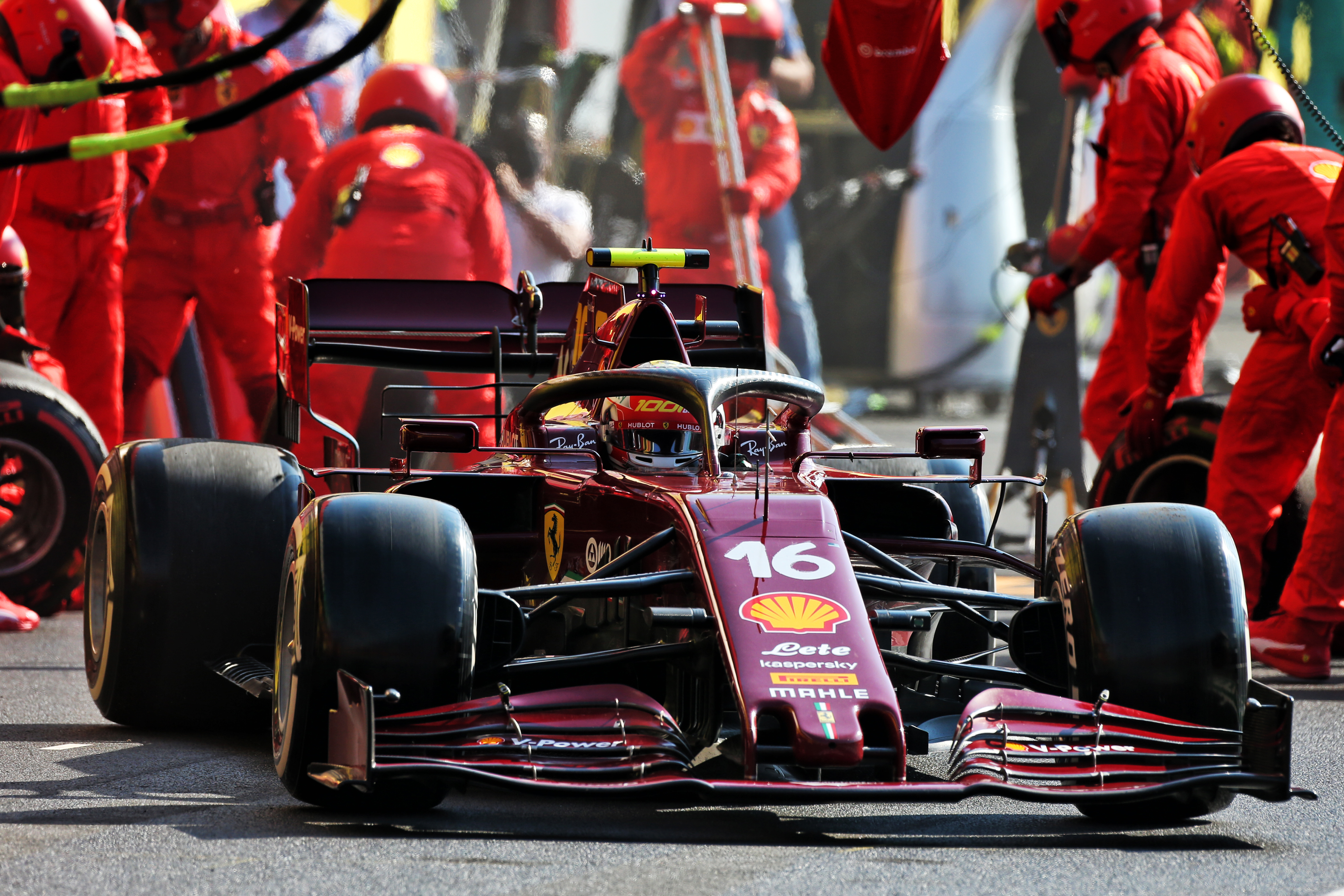
Ferrari’s 1000th grand prix at its very own circuit. How perfect. And a beautiful 1950 Monaco-spec burgundy livery to mark the occasion.
It seemed as if the gods were favouring the team too, with yellow flags for Esteban Ocon’s spin in Q3 coming out behind Charles Leclerc but in front of several cars that may have been expected to outqualify the SF1000. That and a typically brilliant performance from Leclerc put him a highly-flattering fifth on the grid.
Verstappen’s problems and Albon’s slow getaway made that an even more flattering third after two corners.
But of course he was quickly picked off by the faster cars once the race got properly underway: Stroll’s upgraded Racing Point, Albon, Ricciardo’s Renault, Sergio Perez’s old-spec Racing Point (the upgrade was worth as much as 0.3s).
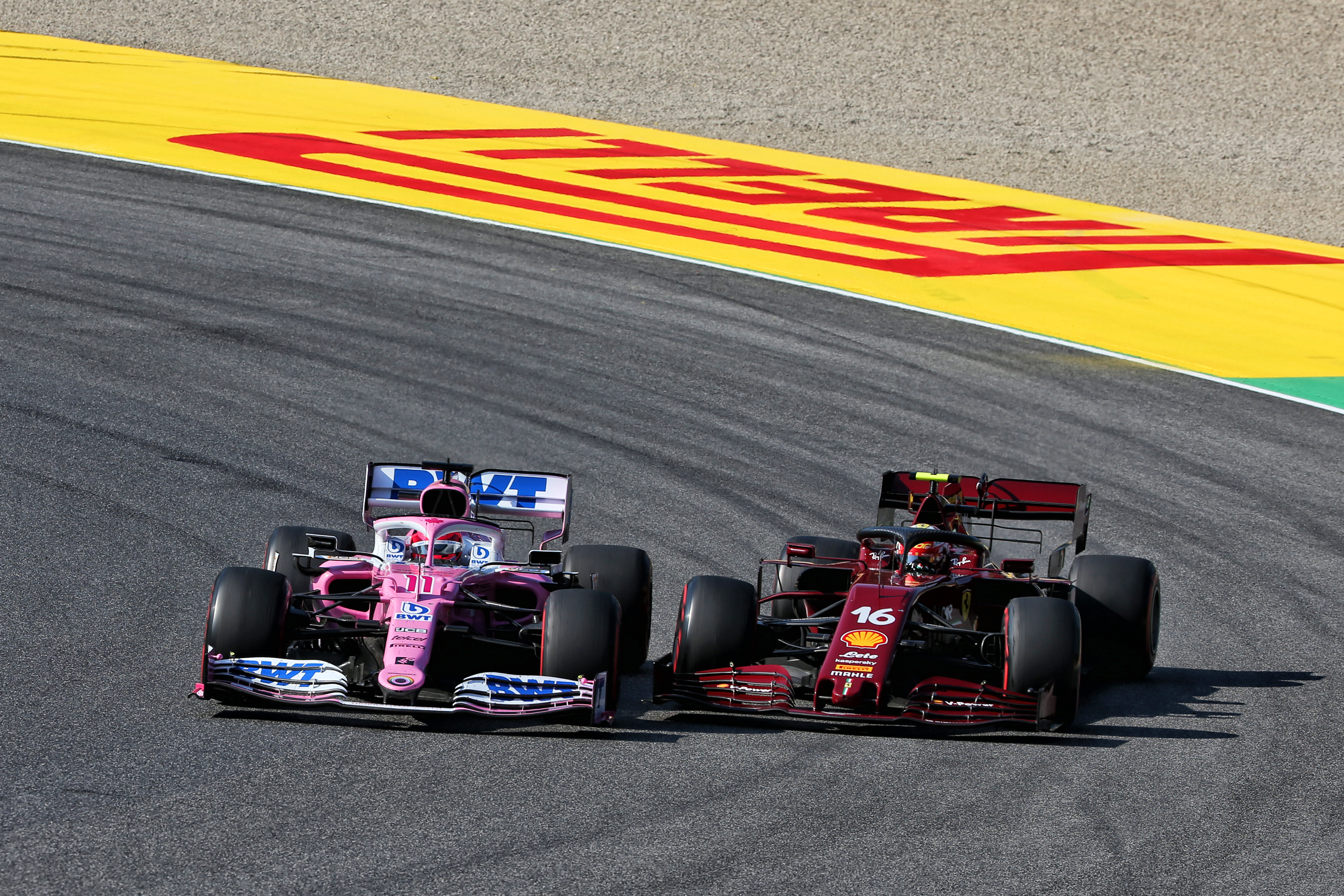
“These tyres are -2,” said Leclerc soon afterwards. He tried the car on hards, softs, mediums in a two-stopping race and it was much the same on all of them – good enough to finish ninth on the road, ahead of team-mate Sebastian Vettel but behind Kimi Raikkonen’s Alfa Romeo.
After a 5s penalty for an unorthodox pit entry was applied to Kimi, Leclerc was an official eighth. When Froilan Gonzalez beat the previously dominant Alfas (from which Ferrari was spawned) at Silverstone 1951, Enzo Ferrari famously said he felt as if he’d killed his mother.
This wasn’t quite as glorious a defeat of Alfa – on a technicality for eighth.
Catastrophic restart

The multi-car accident on the lap seven safety car restart was frightening and in hindsight was always likely to happen.
When the safety car lights are on, the lead driver must not fall back more than 10 car lengths from it. But once those lights go out the leader can hang back to create the track space ahead of them to get the jump on their pursuers. Which is why there is not usually much place-changing upon restarts.
But if the lights go out so late in the lap, the lead driver cannot create that gap and instead crawls, backing up the whole pack, until the last possible moment – which is at the start/finish line, before which you cannot overtake.
The leader – in this case Bottas – is especially motivated to do this at Mugello because the long straight leading to the first corner would virtually guarantee they were slipstreamed otherwise. The distance between the safety car line at the start of the straight to the start/finish is huge.
So Valtteri did what he was obliged to do by the competitive requirements of the moment, while further back in the tightly-compressed pack, there was much jockeying trying to anticipate when Bottas would go. It led to the inevitable rear-end shunt.
George Russell backed off so as not to overtake Ocon (soon to retire with his rear brakes afire). Kevin Magnussen reacted by slowing so as not to pass Russell. Nicholas Latifi was at this moment accelerating and had to swerve left, flying by Magnussen in the process, then slowing in order to get back behind the Haas – and was hit hard up the rear by the accelerating Alfa of Antonio Giovinazzi. Sainz, tight in Giovinazzi’s slipstream, was unsighted and joined in the destruction.
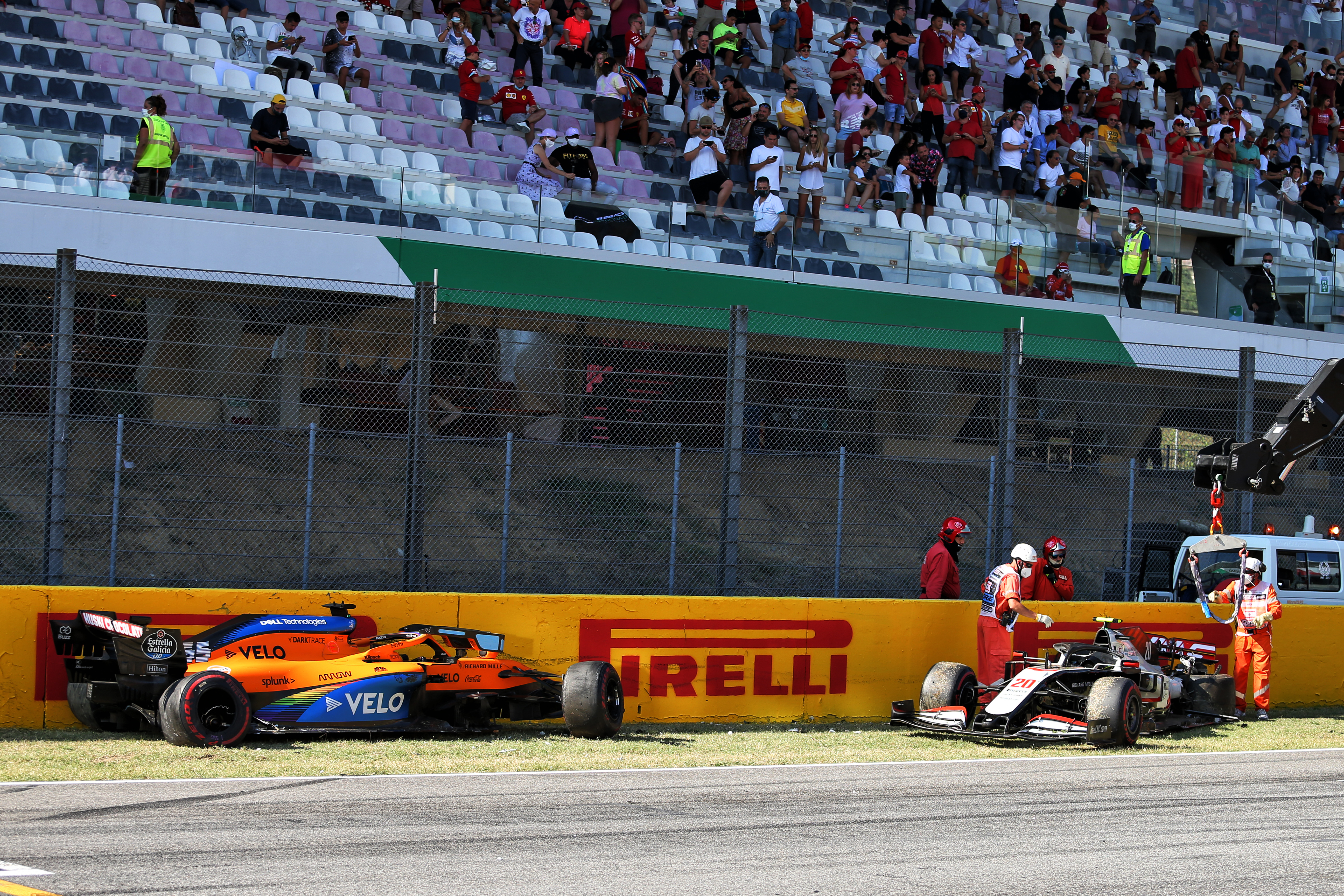
It was a scary, high-speed, multiple-car accident with cars rearing up to cockpit height of others. Thankfully everyone was fine.
It seemed that in an effort at spicing up the restarts, putting out the safety car lights ever-later has been part of an FIA policy – though race director Michael Masi firmly denied any decisions have been made that would compromise safety.
Mercedes, having observed restarts in the F2 and F3 races, had already planned what its drivers would do if they found themselves leading in this situation.
There was another red flag later on, after the first pitstops had all been made and everyone was racing to the finish.
Between the red flags
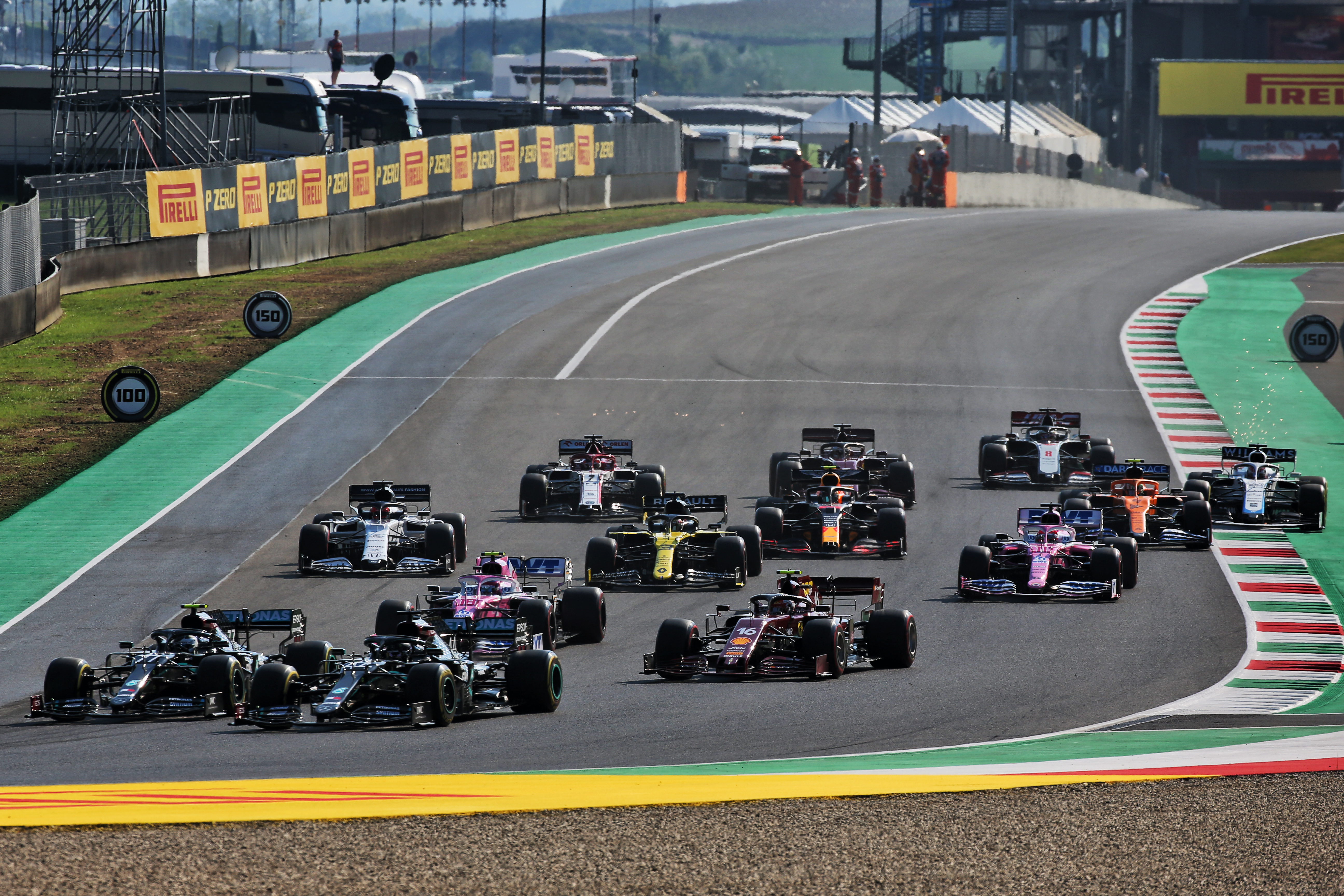
In between those red flag book ends was the solid core of the race. This was the one in which Hamilton simply drove around the outside of Bottas at the first turn.
The Mercedes – having switched to mediums during the stoppage – disappeared at a standard 2020 rate of knots away from a pack initially delayed by Leclerc. Stroll – who’d out-accelerated Albon off the line – would be past the Ferrari soon enough.
With the Ferrari quickly relegated to its natural midfield level and then switching to a two-stop as its tyres died, a great Racing Point/Renault/Albon fight developed.
Perez was slipstreamed in quick succession by Ricciardo and Albon. The Red Bull was comfortably the quickest of this bunch but he had to work hard to get through them.
Renault pulled the undercut plug up to the stops to jump Ricciardo past Stroll for third. Stroll was coming back at him though, chasing hard, with Albon catching the pair of them.
This was hard flat-out racing, outside rear tyres kicking up the dust of the grass just beyond the track’s extremities as they pushed each other to their limits.
There was none of the usual heat-deg racing. The only tyre limit was going to be wear. This is the sort of tyre performance the drivers have been asking for. Magically conjured by Mugello’s old-school rough track surface and perhaps by the relative lack of braking (only six braking zones within its 15 corners).
The imminent failure spooked Mercedes into playing safe
As we saw at the British Grand Prix, the faster the car, the quicker the tyre tends to wear. Bottas, running rarely more than 1.5s behind Hamilton, trying to keep the pressure applied as they ran away from the field, suddenly dropped a whole chunk of time as he experienced a severe vibration across the front axle.
This was exactly the prelude to the blow-ups at Silverstone – and so the team brought him in immediately, several laps earlier than planned, on lap 31 of 59.
That plan had involved him pitting after Hamilton and going to an offset tyre compound (it would have been Hamilton hards, Bottas mediums), as Bottas had requested over the radio.
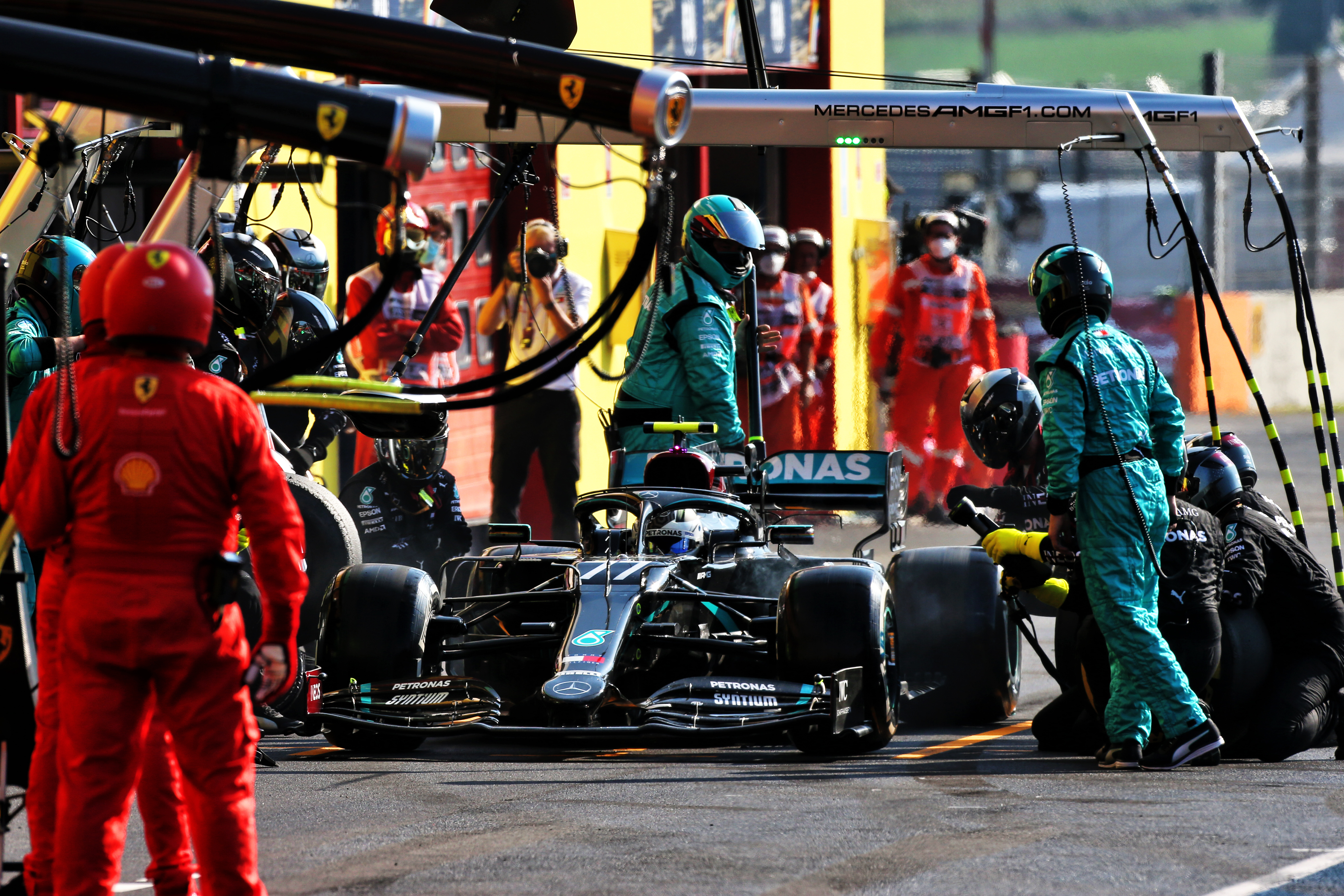
But the imminent failure had spooked Mercedes into playing safe – hards for both cars. Hamilton was brought in the next lap for his.
The Ricciardo/Stroll/Albon struggle continued until something happened to Stroll’s car. Possibly a tyre failure. On lap 43 he spun at around 180mph going through the flat-out Arrabbiata, using up the gravel trap on his way to the tyre barriers. Safety car. So everyone made for the pits for a cheap second stop.
As it became apparent the tyre barriers were going to take some fixing and the Racing Point had set itself on fire, the red flag came out again. For the third time in seven days.
The final sprint
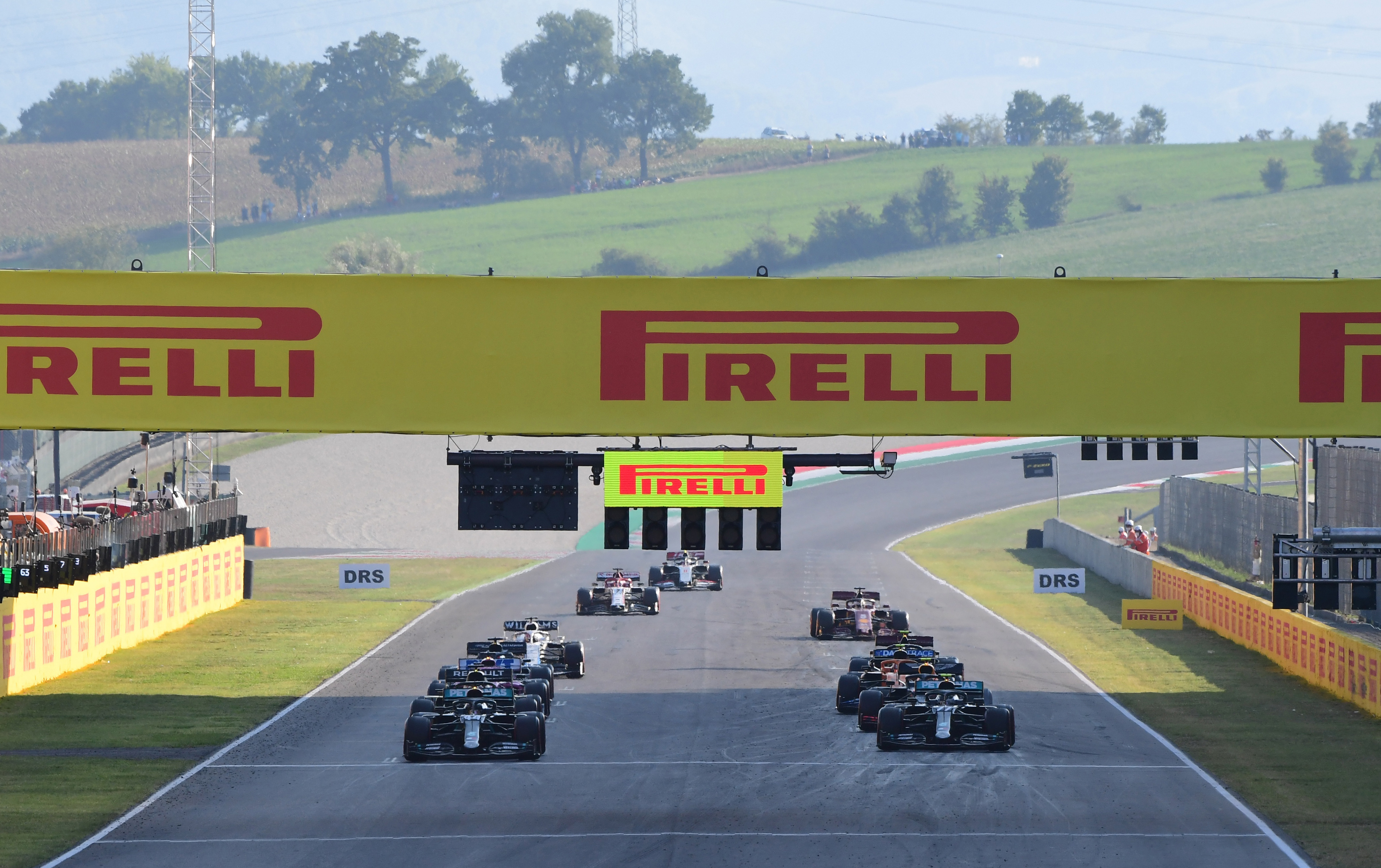
It was late afternoon in the Tuscan hills as Hamilton, Bottas, Ricciardo, Albon, Perez, Lando Norris (neither McLaren was quick at any stage, perturbed by the wind), Daniil Kvyat, Leclerc, Russell’s Williams, Vettel, Raikkonen and Grosjean lined up for their third standing start. Some of them had switched tyres again, the Mercedes on a set of used softs each.
This time Bottas was mugged off the line by Ricciardo and for a glorious lap the Renault chased Hamilton’s race-leading Mercedes. Then Bottas breezed past it even before DRS had been enabled, into the first turn. Leaving Ricciardo to fend off the advancing Albon, once the latter had seen off an opportunistic Perez.
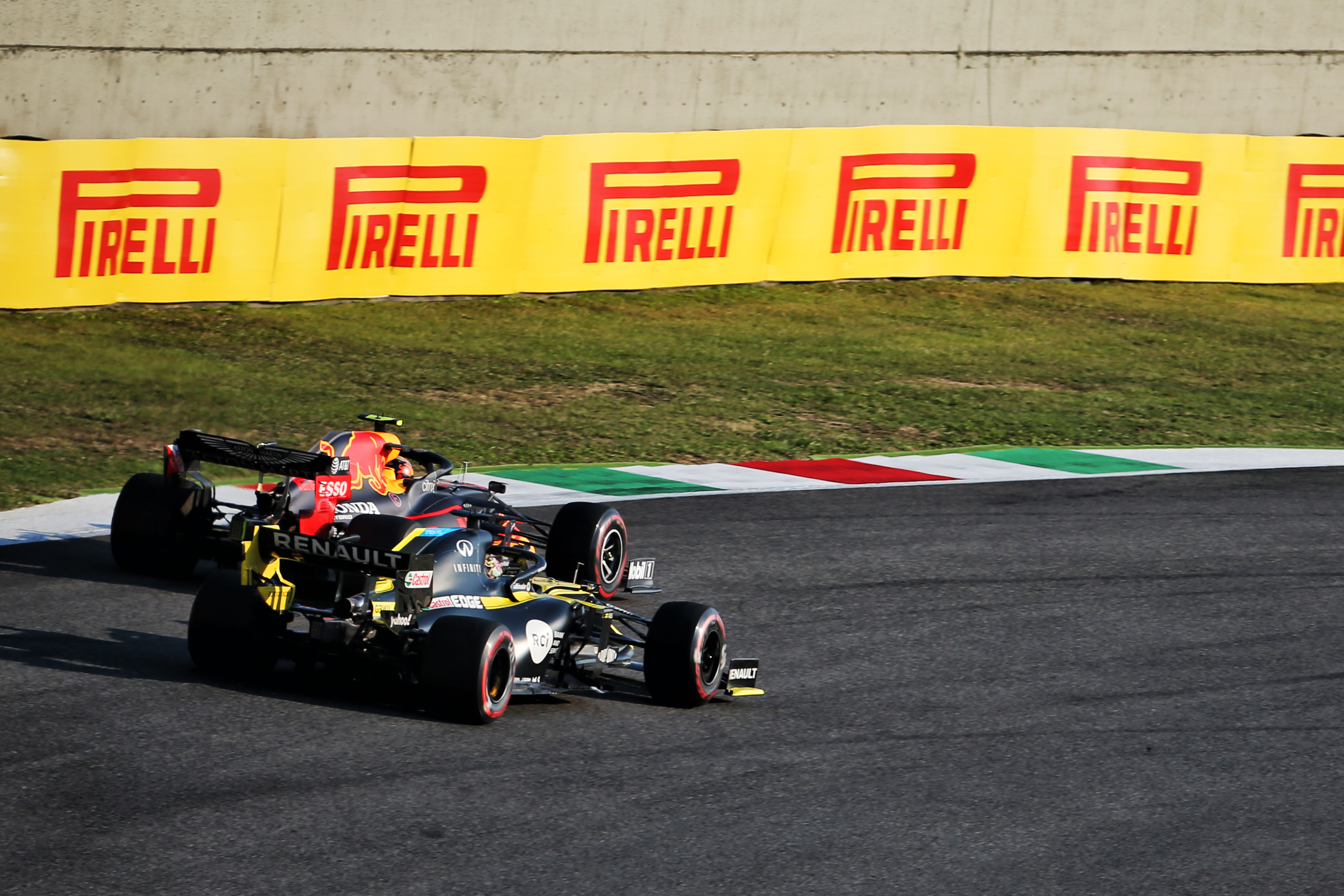
Albon used DRS to get alongside the Renault into San Donato and committed to a hard, late brake around the outside to carry him the momentum past.
He quickly left the Renault behind and for a time looked like he might even challenge Bottas, getting to within 0.8s. Then Valtteri responded with the fastest lap of the race so far – and Albon concentrated on just bringing it home for his first podium.
Hamilton bettered that Bottas lap by 0.6s on his penultimate time around, collecting the extra point that goes with it. Further back, Raikkonen got by the Ferraris. Russell wheel-spun away his ninth place off the line and was denied his first points.
That’s how it went down. Hamilton crept to within one win of equalling Schumacher’s record and wore his ‘Arrest the cops who killed Breonna Taylor’ t-shirt as he was interviewed. Bottas was once more disappointed.
Albon said he felt like he could breathe, now he’d finally got the podium monkey off his back.





